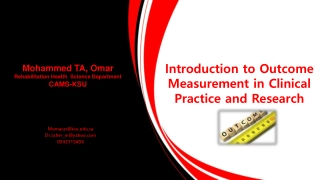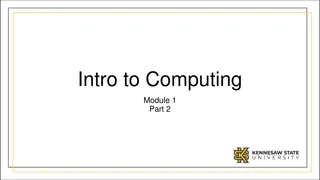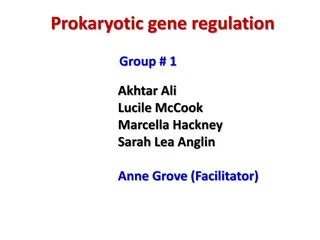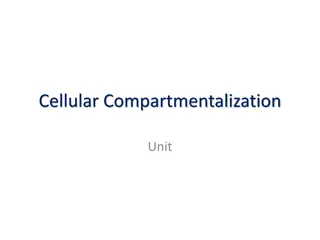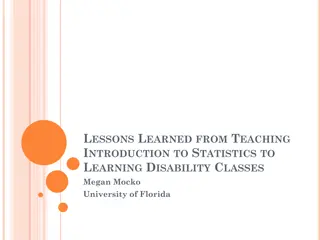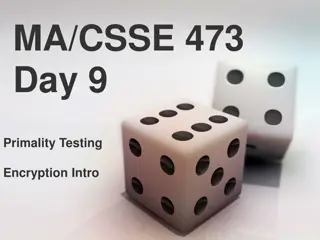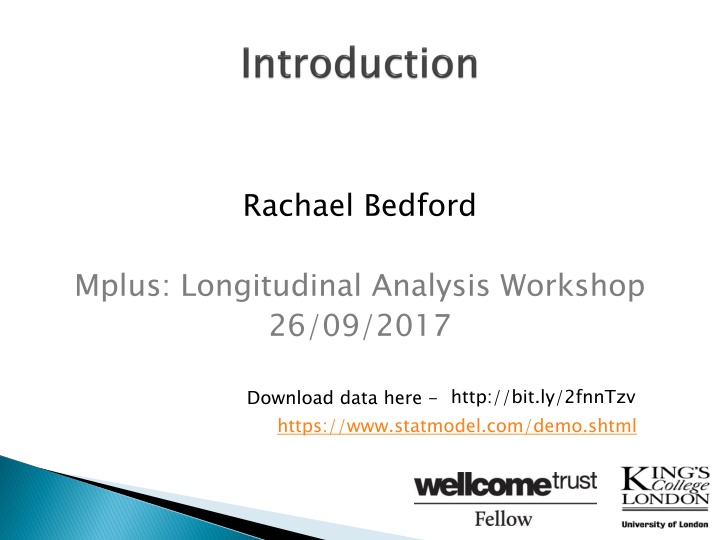
Exploring Language Development: Longitudinal Analysis Workshop Insights
Uncover insights on language development through a longitudinal analysis workshop, addressing hypotheses operationalization, data collection and processing, graphing effects, inferential statistics, and more. Dive into measuring language development from 6 to 36 months, explore data collection methods, check data distribution, and identify outliers for a comprehensive study. Understand the challenges and benefits of longitudinal data analysis for examining change over time and ordering correlations.
Uploaded on | 1 Views
Download Presentation

Please find below an Image/Link to download the presentation.
The content on the website is provided AS IS for your information and personal use only. It may not be sold, licensed, or shared on other websites without obtaining consent from the author. If you encounter any issues during the download, it is possible that the publisher has removed the file from their server.
You are allowed to download the files provided on this website for personal or commercial use, subject to the condition that they are used lawfully. All files are the property of their respective owners.
The content on the website is provided AS IS for your information and personal use only. It may not be sold, licensed, or shared on other websites without obtaining consent from the author.
E N D
Presentation Transcript
Rachael Bedford Mplus: Longitudinal Analysis Workshop 26/09/2017 Download data here - http://bit.ly/2fnnTzv https://www.statmodel.com/demo.shtml KCL
10.00-11.30: Introduction: Longitudinal data analysis, SEM & Mplus 11.30-11.45: Coffee Break 11.45-13.15: SEM & Nested models 13.15-14.00: Lunch 14.00-15.30: Autoregressive & Growth Curve models Download data here - http://bit.ly/2fnnTzv https://www.statmodel.com/demo.shtml
6 months 12 months 24 months 36 months
1. Operationalize your hypotheses 2. Data collection/processing/collation 3. Check data distribution, descriptives, outliers 4. Graph effects 5. Inferential statistics (ideally pre-specified) 6. Post-hoc analyses & conclusions
What might we want to know about language development? Does infant babbling predict later vocabulary? How could we test this? Measure language longitudinally in the same children from 6 - 36 months. Possible issues: Might need to use different measures at each age Need to follow the same children (attrition)
How will the data be collected? Standardised measures vs naturalistic Hand coding questionnaires vs videos Mullen standardised assessment Expressive language 6 months e.g. Canonical babbling (bababa) 12 months e.g. Pat the baby 24 months e.g. Names pictures: ball, house 36 months e.g. What is a hat? Responses recorded by hand and entered into excel spreadsheet
Check the data: means standard deviations skew kurtosis +skew -skew -kurtosis (platykurtic) +kurtosis (leptokurtic) Expressive Language Expressive Language Identify outliers: Boxplot/Scatterplot 15 12 months 10 5 0 0 1 2 3 4 5 6 6 months
80 70 60 EL mean 1 50 2 3 40 4 5 30 6 7 20 8 10 0 7 13 24 36 Between and within subject variation
Data from repeated observations A way to examine CHANGE over time Allows ordering of correlations Various problems with longitudinal data: Expensive to collect Problems with attrition missing data Serial dependence - correlated observations
simultaneous cross-sectional studies sample different age groups on the same occasion trend studies random sample of participants of the same age from the population, on different occasions time participants are followed at successive time points intervention studies variation of time series: intervention/treatment affects only participants in the experimental group time series studies series studies
Repeated responses for each individual will be correlated. Independent t-tests and one-way ANOVA don t take into account within subject correlation lead to biased estimates intra-individual change may be of specific interest (Could use robust standard errors)
Missing completely at random (MCAR) missingness does not depend on the values of either observed or latent variables IF IF this holds can use listwise deletion Missing at random (MAR) missingness is related to observed, but not latent variables or missing values Non-ignorable missing Missingness of data can be related to both observed but also to missing values and latent variables
Missing at random (MAR) Sex influences missingness of IQ score (e.g. boys get up later and are more likely to miss the test) But within males and females separately the IQ score itself does not relate to the missingness of IQ data (e.g. those with lower IQ are not more likely to miss the test that those with high IQ) If model includes sex then data are MAR Non-ignorable missing Trial for depression where those with higher depression scores at post-test are more likely to have missing data (because they were less likely to come in for the study). Missingness of depression score is related to the depression score itself.
Several standard methods do take account of serial correlation: Paired samples t-test Repeated measures ANOVA Generalised Estimating Equations Mixed models (with fixed and random effects) Can impute missing data values Other limitations to bear in mind: Can t covary different factors at different time points Measurement error
Multivariate can include both observed (unobserved) variables Multivariate data analysis technique which observed and latent latent Three key steps in running SEM analysis: Construct a model Estimate model Assess how well it fits the data
Observed variable Latent factor Effects of one variable on another (e.g., regression) Covariance or correlation
Basic building block in SEM: regression. e e e e EL1 EL2 EL3 EL4 Group
[ ] mean [X1 [X1] ] - variance X1 X1 with correlation or covariance X1 with X2 X1 with X2 by factor is indicated by F1 by X1 X2 X3 F1 by X1 X2 X3 on regression Y1 on X1 Y1 on X1 ; - end of a command Y1 on X1; Y1 on X1;
Basic building block in SEM: regression. Mplus Code: EL2 on EL1; e e e e EL3 on EL2; EL4 on EL3; EL1 EL2 EL3 EL4 EL1-EL4 on group; Group
Mplus uses the variance-covariance matrix Variance: movement of each flower varies Covariance: how all flowers move together (Latent variable (causing covariation): Wind) Variance-covariance matrix M2 M1 M1 M3 0.88 0.52 0.67 M2 0.91 0.73 M3 0.89
Various estimators: Ordinary Least Squares (OLS) used in SPSS regression Maximum likelihood (ML) Maximum likelihood with robust standard errors (MLR) Weighted Least Squares (WLS) Why is estimation important? Influences quality and validity of estimates In order to run a model it must be identified, i.e., all the parameters have only one solution fewer or equal number of parameters to be estimated than components in the variance-covariance matrix
What does ML do? ML identifies the population parameter values (e.g. population mean) that are most likely or consistent with data (e.g. sample mean) It uses the observed data to find parameters with the highest likelihood (best fit) How does ML estimate parameters? By constraining search for parameters within a normal distribution
Can apply ML to incomplete as well as complete data records i.e. where data is missing in response variables This is called Full Information Maximum Likelihood (FIML). If data are missing at random we can use FIML to estimate model parameters. Remember: Missing at random DOES NOT MEAN missing at random.
A case with an IQ 85 would likely have a performance rating of ~9. Based on this information, ML adjusts the job performance mean downward to account for the plausible (but missing) performance rating
Another approach: Multiple Imputation Multiple copies of the data set are generated, each with different estimates of the missing values. Analyses performed on each of the imputed data sets, and the parameter estimates and standard errors are pooled into a single set of results. Maximum Likelihood Estimate parameters does NOT fill in missing values Usually best for continuous data Maximum Likelihood Multiple imputation Does fill in the missing data Multiple imputation Best for categorical or item level data In a large sample ML and MI give the same results In a large sample ML and MI give the same results
Goodness of fit means assessing how well the model fits, i.e. how well it recreates the variance-covariance matrix Can also compare fit of multiple models Various fit indices: 2 test of model fit CFI BIC RMSEA
Enables more complex questions to be addressed. Allows some challenges associated with longitudinal data e.g., missing data, floor and ceiling effects, to be directly accounted for in the model. Appealing tool to address questions about developmental processes.
Edinburgh Study of Youth Transitions and Crime ESYTC is a prospective longitudinal study of pathways into and out of offending amongst a cohort of more than 4000 young people in the city of Edinburgh Focus of this course: Six annual sweeps of self- report surveys from cohort members (aged 12-17) and official records from schools Edinburgh Study of Youth Transitions and Crime
Different commands divided into a series of sections TITLE DATA VARIABLE ANALYSIS MODEL Others that will be used DEFINE OUTPUT SAVEDATA PLOT TITLE DATA (required) VARIABLE (required) ANALYSIS MODEL DEFINE (data management) OUTPUT SAVEDATA (e.g. factor scores, trajectory membership) PLOT




